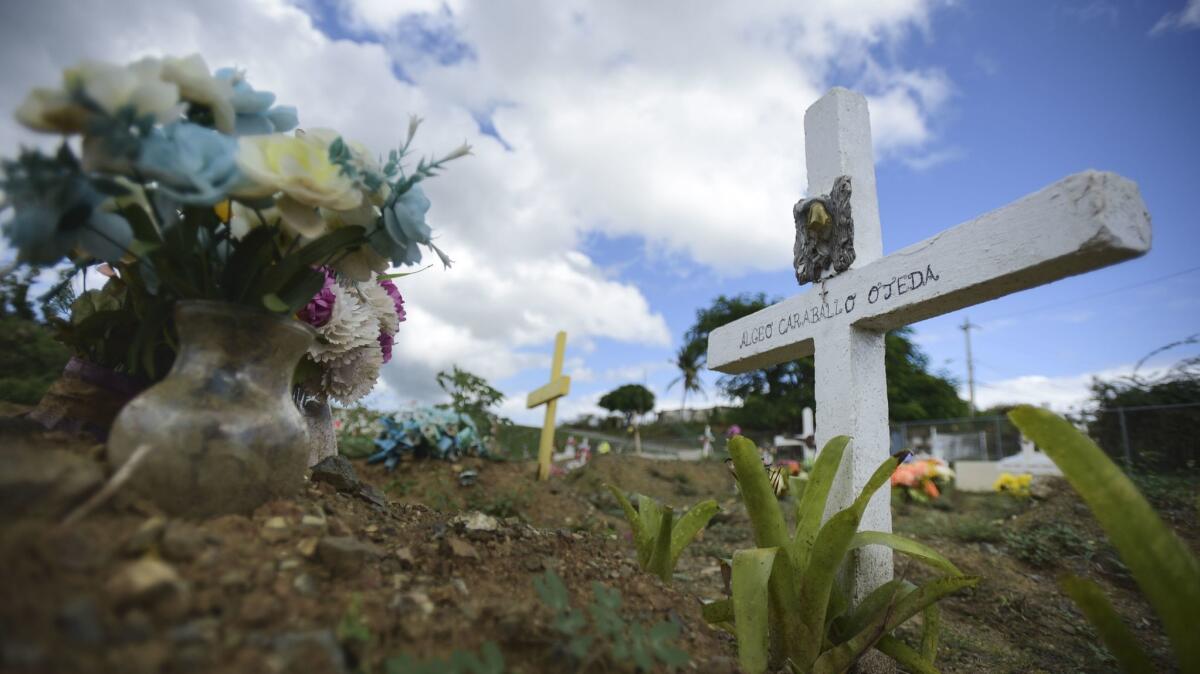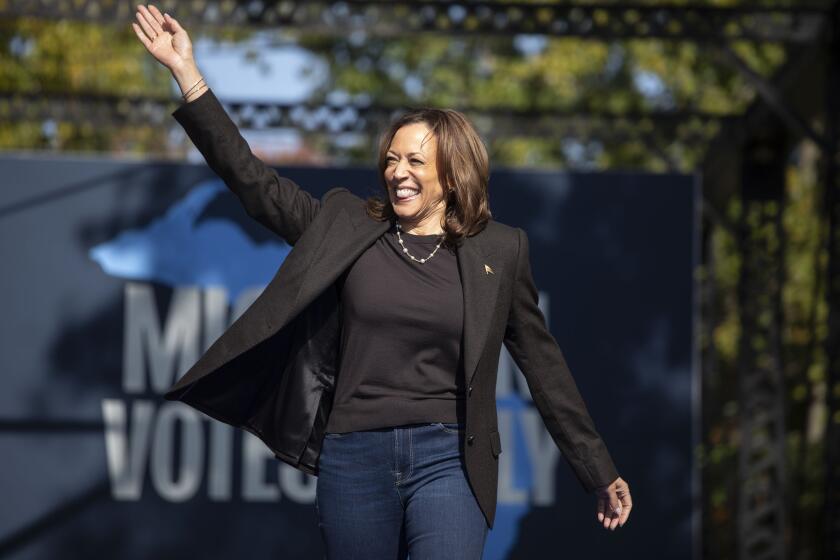Editorial: One year after Maria hit Puerto Rico, we’re still piecing together what happened and what to do about it

Blue tarps still substitute for roofs in scattered spots around Puerto Rico a year after Hurricane Maria slammed into the island and upended the lives of virtually every resident. The electric grid only recently has returned to something near full service, although some homes still rely on generators. Water service has been officially restored, but many people still get their daily supplies from plastic bottles. With attention understandably now drawn to the Carolinas and the lingering misery wrought by Hurricane Florence, and with anxiety mounting over the prospect of continuing destructive weather events in the Caribbean and the Atlantic, the nation still isn’t exactly sure what happened last year in Puerto Rico, what lessons to learn and how much to care.
We can’t even settle on how many people Maria killed. Perhaps a dozen died from drowning and flying debris when the hurricane made landfall on Sept. 20, 2017. The following weeks, though, presented dramatic and tragic evidence both that Puerto Rico’s infrastructure and government were unready for a major disaster — and that officials there and in Washington can’t count. By December the toll from the storm and the aftermath together was reported to be 64, yet academic studies found that figure to be off by a factor of 70. Last month the government of Puerto Rico accepted the results of a Milken Institute study and raised the official toll to 2,975 — triggering a political storm of tweets and recriminations.
For the record:
9:00 a.m. Sept. 20, 2018An earlier version of this editorial misstated the limits that the Jones Act places on foreign flagged vessels. They can serve Puerto Rico directly, but cannot carry cargo from the U.S. mainland to the island.
The attitude of the nation toward the island, and vice versa, is characterized by ambivalence.
Some on the island argue that the damage was greater than it might otherwise have been and has lasted longer because of U.S. mainland ignorance and xenophobia, in that not enough people realize that Puerto Ricans are in fact American citizens and therefore didn’t respond to islanders with the same care and compassion they reserve for other Americans. That’s too simplistic an analysis. The Federal Emergency and Management Agency didn’t have to look up Puerto Rico on a map. It responded quickly, and officials argue that its Maria effort was the largest response to a disaster in U.S. history. True, President Trump’s manner and statements at the time were typically unhelpful — tossing paper towel rolls to suffering residents seems less than presidential, and tweeting that Puerto Ricans want everything done for them is both false and mean. Yet it’s also true that the commonwealth hadn’t done enough to prepare. Emergency response plans were not up to date.
In some obvious ways, Puerto Rico is different from the Carolinas, Houston, New Orleans, New York or any of the other places on the mainland devastated in recent years by hurricanes and tropical storms. It’s an island, which makes it harder for residents to quickly leave and return, or for entrepreneurs from out of state to drive in needed services in the way that food suppliers and construction workers could in the wake of Katrina, Irene and Harvey. The fact that it’s predominantly Spanish-speaking separates it from the nation’s dominant English-language news cycle and therefore much of the national consciousness.
Primarily, though, Puerto Rico is different because so much of the island is relatively underdeveloped, and because its status as a commonwealth — part of the United States, yet not one of the united states — has left it far short of its potential. The attitude of the nation toward the island, and vice versa, is characterized by ambivalence.
Enter the Fray: First takes on the news of the minute from L.A. Times Opinion »
If it were considered a nation, Puerto Rico would be one of Latin America’s bright spots, with thriving petrochemical, pharmaceutical and electronics manufacturing, and successful finance and insurance industries. But as a U.S. state, it would by far be the poorest, with nearly half the population living in poverty. Twelve straight years of economic contraction is a result in part of official mismanagement in the commonwealth — but also in part due to policies set in Washington that have curbed tax incentives for mainland investors, and laws like the Jones Act, which prevents foreign-flagged vessels from carrying cargo to Puerto Rico from other U.S. ports. The U.S. too often treats Puerto Rico like a possession to be exploited rather than an integral part of the nation to be supported.
FEMA may well have done its best in the aftermath of Hurricane Maria, but it was responding to a disaster that has its roots in the still-amorphous relationship between the island and the rest of the U.S. The storm was a stress test, and Puerto Rico and the rest of the nation failed together. More, and tougher, tests are undoubtedly on their way, as warming oceans make hurricane season more hazardous.
Follow the Opinion section on Twitter @latimesopinion and Facebook
More to Read
A cure for the common opinion
Get thought-provoking perspectives with our weekly newsletter.
You may occasionally receive promotional content from the Los Angeles Times.










